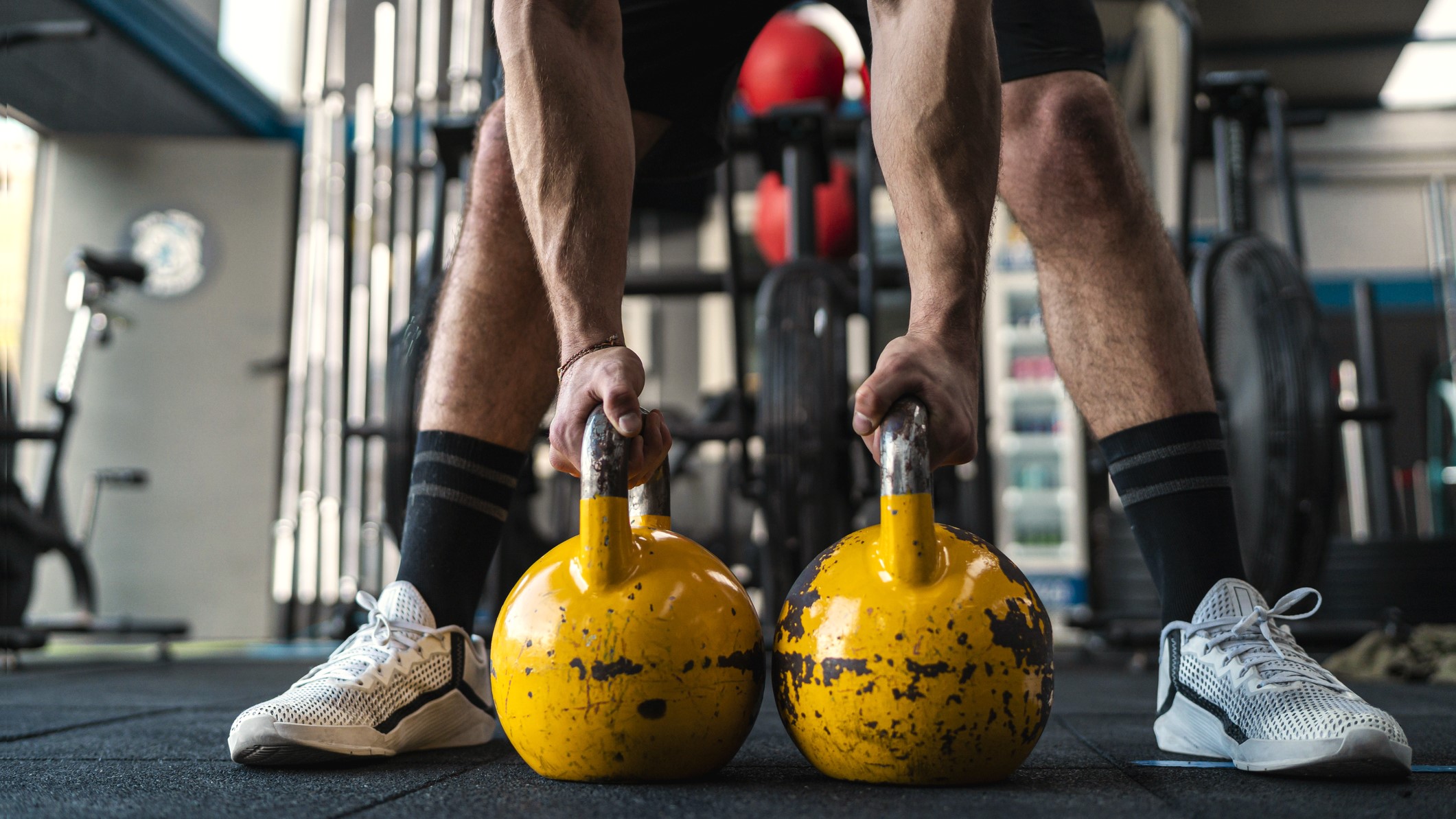I did the gorilla row every day for a week — here’s what happened to my upper body
Here’s how to do a gorilla row, and what I learned trying it for a week

When it comes to working on your back muscles, few moves work as well as the row does. Yet while you might have heard of the single-arm dumbbell row or tried the bent-over row in the gym, the gorilla row is a great exercise to add to your routine if you’re looking to engage your lower body as well. To find out more, I grabbed a set of the best kettlebells and added it to my routine every day for a week — read on to find out what happened.
As always, it’s worth mentioning that what works for me might not be right for you and your body. Doing the same exercise every single day isn’t advisable — your muscles need time to properly rest and recover between workout sessions in order to grow. When I’m not doing fitness challenges for Tom’s Guide, I usually do a couple of strength sessions a week, mixed with running and Pilates classes.
How to do a gorilla row
The gorilla row is named as such because of the stance you take during the exercise. It’s a great compound exercise that works your upper and lower body, as well as your back muscles. Here’s how to do it:
- Start by standing with your feet shoulder-width apart, or slightly wider. If you’re using a set of the best kettlebells, position two kettlebells of the same weight between your feet. If you’re using the best adjustable dumbbells, start the move holding a dumbbell in each hand.
- Hinge your hips back and bend at your knees, as if you’re about to perform a deadlift. Grasp the kettlebells with each hand, or lower the dumbbells to your shins.
- Keeping your core engaged, row up on one side. Leaving the other weight either on the floor, or at shin-height, press down into that side, so it’s an opposite push/pull movement as you row.
- Keep your hips out and back throughout the movement — don’t allow them to rise up or sway as you move.
Remember, when selecting the right weight for you and your body, the reps should feel challenging, but not impossible. At no point should the weight of the dumbbell or kettlebells compromise your form.
If you only have one weight, complete all your reps on one side before switching. Make sure you have something sturdy, like a block, to brace the non-working hand against as you move.
What are the benefits of the gorilla row?
As mentioned above, this is a compound move, meaning it’s working a number of different muscles at the same time. This row variation targets the lats, rhomboids, and trapezius muscles in the upper back, as well as the shoulders and biceps. You’re also working your core to keep the body steady in the hip-hinge position while rowing.
I did the gorilla row every day for a week — here’s what happened to my upper body
What happened when I added this move to my workouts for a week? Read on to find out.
Sign up to get the BEST of Tom's Guide direct to your inbox.
Get instant access to breaking news, the hottest reviews, great deals and helpful tips.
I noticed I had a stronger side
As with a lot of unilateral movements, working one side of my body at a time helped highlight the imbalances in my body. My right, dominant side, was definitely stronger than my left side, and I found it much easier to complete the gorilla row on the right-hand side.
While having one stronger side is perfectly normal, over time, it can lead to a muscle imbalance, and potentially an injury. Noticing my left side was weaker was a good reminder to focus on this in the gym.
As the week progressed, I found I was able to increase the weight of the dumbbells I was using slightly each day, and by the end of the week, I definitely felt my left side was stronger.
I felt this in my lower body too
I wasn’t expecting to feel this exercise in my lower body as much as I did, but I found both my legs and abs had to work to keep me in the hinge position for the row. Holding the isometric position builds tension, and forces the muscles in the legs and core to stay engaged throughout.
Compared to traditional ab exercises, working on core stabilization, as you do during the gorilla row, can help your functional fitness — you’re working the muscles you’d need to pick something heavy in your day-to-day life.
My back didn’t love this challenge
As I’ve mentioned in previous articles, I suffer from lower back pain and sciatica following a horse riding accident in my teens, so I have to be mindful of my lower back when exercising. On the first few days of this challenge, I opted to do three sets of 20 reps, but found my lower back didn’t love holding the position of the gorilla row. The next couple of days, I lowered the weight, and really focused on keeping my back flat during the exercise and pausing to re-set between sets.
Each day the exercise got a little easier, and it forced me to consider that I needed to focus on strengthening the muscles in my upper back. As always, if you do suffer with back pain, or have had a previous back injury, it’s worth checking with your doctor or a personal trainer before attempting this exercise.
I did the gorilla row every day for a week — my verdict
What did I learn after a week of gorilla rows? This row variation gives you a lot of bang for your buck. My legs and abs got a workout as well as my arms and back, and I also worked on my grip strength too. Of course, I didn't notice any visible change in my muscles after a week, but I definitely felt stronger on my weaker, left side.
This is a good option to do when you’re short on time and space, as you don’t need an awful lot of equipment, and you can easily progress the exercise by increasing the weight. Just ensure you’re moving with correct form before adding more weight to the move.
More from Tom's Guide

Jane McGuire is Tom's Guide's Fitness editor, which means she looks after everything fitness related - from running gear to yoga mats. An avid runner, Jane has tested and reviewed fitness products for the past five years, so knows what to look for when finding a good running watch or a pair of shorts with pockets big enough for your smartphone. When she's not pounding the pavements, you'll find Jane striding round the Surrey Hills, taking far too many photos of her puppy.
